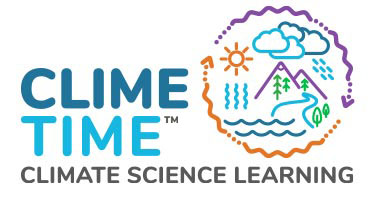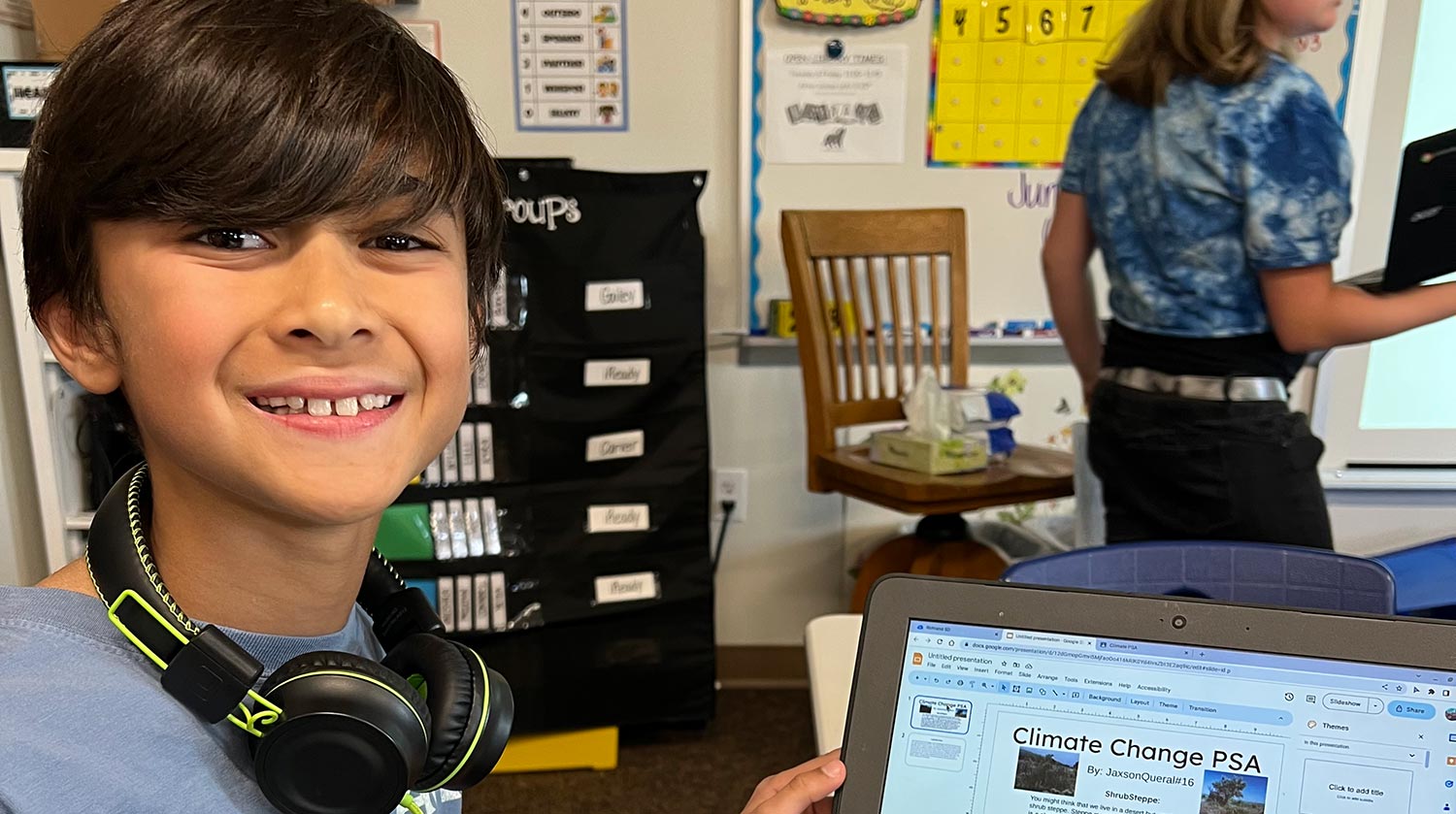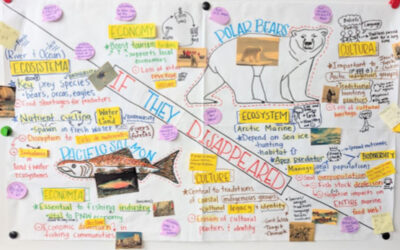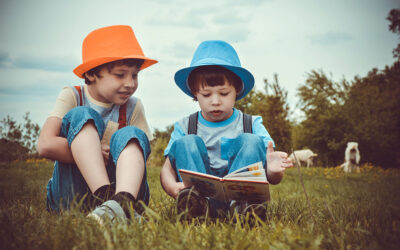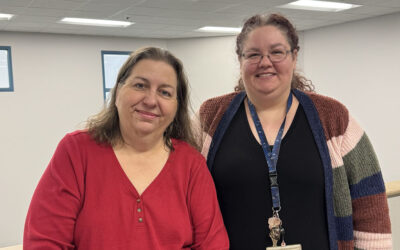The fourth-grade students at Wiley Elementary School, under the guidance of their passionate science teacher, Mrs. Gailey, are delving into the intricate relationship between climate change, river temperature, and the migration of salmon.
As these young minds explore the interplay between environmental shifts and wildlife behavior, they are discovering the profound impact that rising temperatures can have on their local ecosystem.
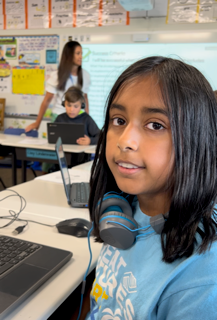
Anushka talking about salmon migration
With Mrs. Gailey leading the way, the students have embarked on an eye-opening journey to comprehend the effects of climate change on their surroundings. Recognizing the significance of their region’s iconic salmon population and the rivers that support their annual migrations, the students are studying how heat can disrupt this delicate balance.
As the world faces the growing threat of climate change, river temperatures have been steadily rising, posing a significant challenge to the natural rhythm of salmon migration. The students have learned that salmon are cold-water species, relying on specific temperature ranges to spawn and migrate successfully. However, with rising temperatures, the rivers they call home are becoming stressful for the salmon to navigate. Carly, a student in the class, clearly says, “ My theory is that killing nature is killing you, because you are nature!”
To gain firsthand knowledge, the students have embarked on field trips to the Wanapum and McNary Dams, where they witnessed the impact of changing river conditions on salmon populations. Anushka, another student in the class, “…was very surprised at all the ways the dams are getting better to help salmon migrate safely, the bypass system they use.” They have also conducted field investigations along the Columbia River, collecting data on water quality, including temperature, turbidity, and pH, and observing the effects on salmon migration. Moreover, the students have had the opportunity to engage with native shrubsteppe plant experts, learning about the importance of maintaining a healthy habitat for salmon and other wildlife. Clay says, “We have to think about the sage grouse and the pygmy rabbit, they need the shrubsteppe!” Indigenous perspectives were woven deeply in the classroom through art, storytelling, respect, and gratitude for the life of the salmon. Dominic retells this when he shares, “they respected salmon and would not take for granted, they only take what they need.” he goes on to say, “they were tough, I fish salmon and use a pole, but they just used sticks, it was hard work.” Deeper understanding of the Wanapum people and their history was made through visits with tribe members at the Heritage Center, as well as a mobile visit to Wiley Elementary School
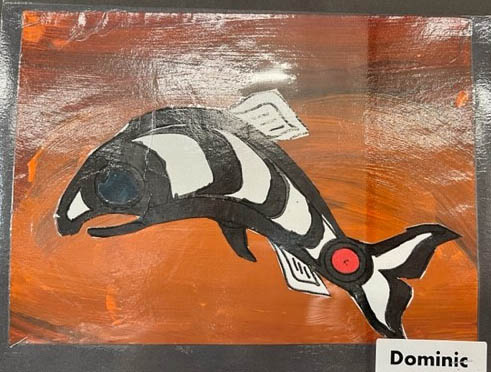
Dominic’s salmon art
The consequences of this disruption extend far beyond the survival of salmon. The students are discovering how the decline in salmon populations can have a cascading effect on the entire ecosystem. As keystone species, salmon are crucial for other wildlife, such as bears and eagles, who depend on them as a primary food source. Additionally, the decline in salmon affects the health of river ecosystems, as their nutrient-rich carcasses play a vital role in fertilizing the surrounding land.
Through Clime Time funding and with the support of ESD 123, Mrs. Gailey’s innovative teaching methods combine classroom learning with hands-on experiences, ensuring her students truly grasp the impact of climate change on their local environment.”The students have been incredibly engaged in this topic,” shared Mrs. Gailey. “By experiencing the issue directly and seeing how their actions can affect the environment, they develop a sense of responsibility and an understanding of their role in creating a sustainable future. My goal was for them to understand the power they have, as citizens, to make a positive human impact on their local ecosystem.”
The knowledge gained by these young learners extends beyond their immediate surroundings. Through their exploration of climate change and its effects on the local ecosystem, they are developing critical thinking skills and a deep appreciation for the interconnectedness of our planet.
As these 4th grade students at Wiley Elementary in Richland, Washington, embark on their journey to comprehend the complexities of climate change, they are becoming environmental stewards, ready to take action and make a difference in the face of this global challenge. Their learning journey will undoubtedly shape their future decisions and inspire others to join the fight against climate change, ensuring a healthier and more sustainable world for generations to come.
